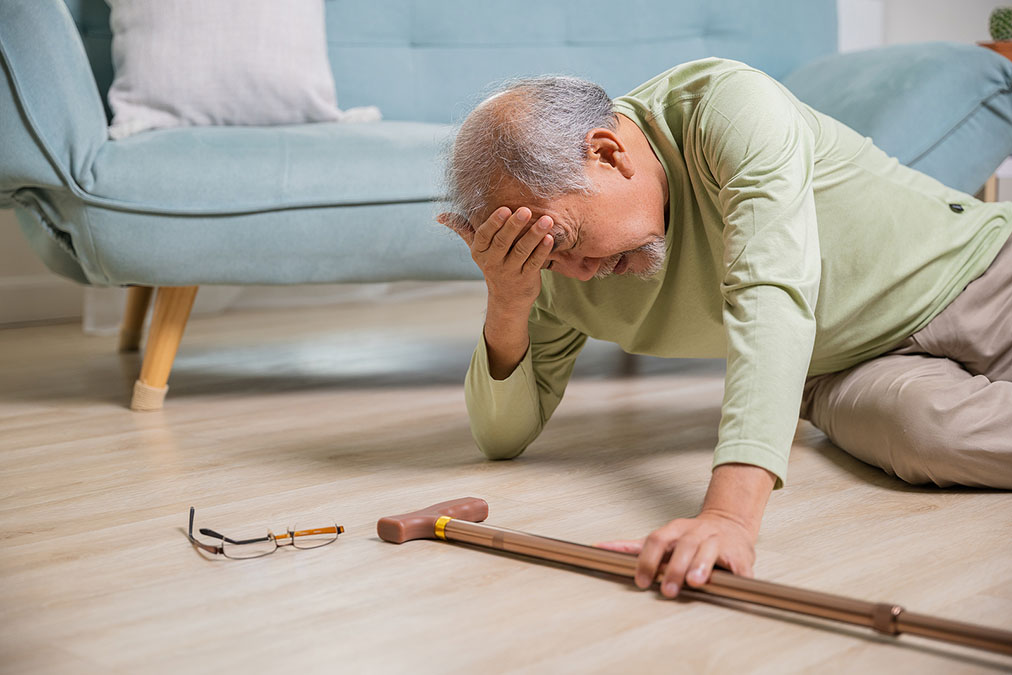 Scientists have been struggling to identify clear risk factors for osteoporosis. Without knowing what causes it, how is it possible to cure it?
Scientists have been struggling to identify clear risk factors for osteoporosis. Without knowing what causes it, how is it possible to cure it?
That’s why a new study in the Journal Archives of Osteoporosis is so important.
It identified a strange cause of osteoporosis that has nothing to do with calcium or other nutritional factors.
The scientists obtained information collected in the Korean National Health and Nutrition Examination Survey 2008–2011. There were 5,830 subjects in this study, all above age 50, all with body mass index values above 18.5, with underweight people excluded.
Bone mineral density scores were available for all subjects, and muscle and fat percentage scores were derived from dual-energy X-ray absorptiometry scans.
When the scientists put all this information together, they were able to determine the effects that fat and muscle loss had on osteoporosis.
-
1. Both low muscle and low fat tissue increased the participants’ risk of osteoporosis by around 3.5 times.
2. Low fat mass was associated with a 61% increased risk of osteoporosis, independent of low muscle mass.
3. 21% of the normal-fat, 27% of the obese, and 31% of the low-fat participants had osteoporosis, showing low-fat to be a greater risk factor than obesity.
Therefore, both low muscle mass and low fat mass are osteoporosis risk factors, independently of each other. This means that we should maintain both our muscle and fat tissue as we age.
At the same time, it’s important to not be overweight or obese.
Why does fat seem to play a positive role in bone health while it is so damaging elsewhere?
Fat tissue produces several hormones, including adiponectin and leptin, which have been found to play a role in the breakdown of old bone and the formation of new bone.
A decrease in fat tissue can lead to a decrease in these hormones, which may, in turn, weaken our bones and lead to osteoporosis.

 Overcoming IBD
Overcoming IBD Multiple Sclerosis
Multiple Sclerosis Banishing Bronchitis
Banishing Bronchitis Gum Disease Gone
Gum Disease Gone Overcoming Onychomycosis
Overcoming Onychomycosis Neuropathy No More
Neuropathy No More The Prostate Protocol
The Prostate Protocol Brain Booster
Brain Booster
 Ironbound
Ironbound
 Solution for Shingles
Solution for Shingles
 The Bone Density Solution
The Bone Density Solution
 The Ultimate Healing Protocol
The Ultimate Healing Protocol
 The Parkinson's Protocol
The Parkinson's Protocol
 The Chronic Kidney Disease Solution
The Chronic Kidney Disease Solution
 Overthrowing Anxiety
Overthrowing Anxiety The Fatty Liver Solution
The Fatty Liver Solution The Hypothyroidism Solution
The Hypothyroidism Solution
 The End of Gout
The End of Gout The Blood Pressure Program
The Blood Pressure Program
 The Oxigized Cholesterol Strategy
The Oxigized Cholesterol Strategy
 Stop Snoring And Sleep Apnea Program
Stop Snoring And Sleep Apnea Program
 The Arthritis Strategy
The Arthritis Strategy The Vertigo & Dizziness Program
The Vertigo & Dizziness Program The 3-Step Diabetes Strategy
The 3-Step Diabetes Strategy Hemorrhoids Healing Protocol
Hemorrhoids Healing Protocol The Erectile Dysfunction Master
The Erectile Dysfunction Master Weight Loss Breeze
Weight Loss Breeze The IBS Program
The IBS Program The Insomnia Program
The Insomnia Program The Migraine and Headache Program
The Migraine and Headache Program The Neck Pain Solution
The Neck Pain Solution The Menopause Solution
The Menopause Solution The Ejaculation Master
The Ejaculation Master The TMJ Solution
The TMJ Solution The Acid Reflux Solution
The Acid Reflux Solution The Fibromyalgia Solution
The Fibromyalgia Solution The Psoriasis Strategy
The Psoriasis Strategy